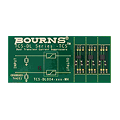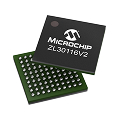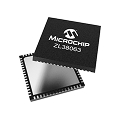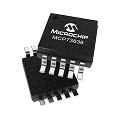Integrated circuits are categorized into several groups based on their function and complexity. The most common types include analog ICs (such as op-amps and comparators), digital ICs (including logic gates and flip-flops), mixed-signal ICs (like analog-to-digital converters and digital-to-analog converters), and microcontrollers. Each type serves specific purposes, from signal amplification and computation to control functions in embedded systems. When selecting an IC, base your choice on application requirements, including signal type, processing needs, and overall system architecture. Always review performance specifications and verify interface compatibility before making your final selection.
IC packages come in various forms, including DIP, SOIC, QFN, and BGA configurations. Your selection should depend on several key factors: PCB layout constraints, assembly process capabilities, thermal management needs, and available space. Surface-mount packages, such as QFN and BGA, offer excellent compactness and high pin density, although they require precise soldering techniques. Through-hole packages such as DIP offer easier prototyping and work well for manual assembly processes. Make sure your chosen package aligns with your production capabilities and thermal management strategy.
Start by examining the IC's supply voltage range, current consumption, and power dissipation characteristics. Verify that your power supply can deliver stable voltage within the IC's specified operating range. For low-power or battery-operated applications, prioritize ICs featuring efficient sleep modes and low quiescent current. Consider heat dissipation requirements as well since high-performance ICs often need thermal pads or heat sinks. Always consult the datasheet for recommended operating conditions and available power management features.
Confirm that logic levels, voltage domains, and signal timing align across all ICs in your system. In digital applications, mismatched logic levels (for example, 3.3V versus 5V) typically require level shifters for proper operation. For analog signals, focus on impedance matching and appropriate biasing. Pay attention to timing parameters, including setup time, hold time, and propagation delay, to ensure compatibility. Choosing ICs with well-documented interface standards will simplify your integration process.
IC reliability hinges on proper thermal management, voltage control, ESD protection, and operation within specified parameters. Common failure causes include overvoltage conditions, overheating, and improper handling, which can result in either immediate failure or latent defects.
Protect your ICs by using decoupling capacitors to minimize noise and guard against transient voltage spikes. Never exceed the absolute maximum ratings specified in component datasheets. Following established design guidelines and proper storage practices will help ensure the long-term performance and reliability of integrated circuits.
See More










